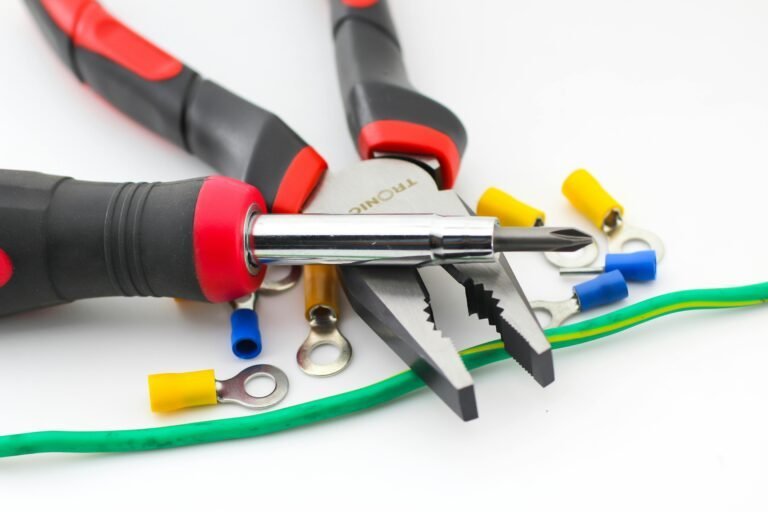Forbes: 4 Forces Fueling Gen Z’s Shift To Blue‑Collar Jobs

A dramatic shift is reshaping both higher education and skilled trades. According to new research from Resume Builder, 37% of Gen Z college graduates are now working in or actively pursuing blue-collar jobs—representing the most significant talent influx into trades in decades. For the first time in generations, college-educated Gen Z workers are voluntarily choosing skilled-trade jobs over traditional white-collar careers, driven by a combination job market realities and evolving definitions of career success.
Let’s explore the four forces driving this shift, how employers can respond and what steps job seekers can take to capitalize on this workforce trend.
1. Job Security and Abundant Openings
Skilled trade jobs are experiencing unprecedented demand across multiple sectors. The Bureau of Labor Statistics (BLS) projects faster-than-average growth for electricians, plumbers and wind turbine technicians through 2033. Deloitte research indicates that U.S. manufacturing alone could need 3.8 million additional workers by 2033, with 1.9 million positions potentially unfilled. This surge in demand explains why, according to the Resume Builder survey, 30% of Gen Z college graduates considering blue-collar jobs cite better long-term prospects as their primary motivation, while 19% made the switch because they were unable to find work in their field of study. While most college graduates face months-long job searches and unpaid internships, skilled trades offer immediate employment and job security.
2. Better ROI Than Many Degrees
Median wages for skilled-trade jobs now rival entry-level salaries for white-collar positions while avoiding the crushing burden of student debt. This economic reality is reflected in the Resume Builder survey, where 16% of college graduates who switched to trades said they weren’t earning enough with their credentials. The average federal student loan debt exceeds $38,000, resulting in payments that consume a significant portion of entry-level salaries for years. Meanwhile, apprenticeship programs offer paid training from day one. Experienced electricians, plumbers and HVAC technicians routinely earn between $60,000-$80,000 annually, with top performers commanding six-figure incomes.
3. AI Anxiety and Automation-Proof Work
Having grown up with technology, Gen Z workers understand the potential of automation to disrupt knowledge work. This explains why the survey indicates that 25% of college graduates entering trades specifically chose blue-collar work because they believe these jobs are less likely to be replaced by AI. The physical, problem-solving nature of skilled trades makes them inherently resistant to automation. While AI can assist with design and planning, it can’t wire a house, fix a broken pipe or troubleshoot complex mechanical systems in unpredictable environments.
4. Values Fit and Tangible Impact
Many Gen Z workers are drawn to the tangible nature of skilled trades. This generation values purpose and impact, and trades offer immediate, visible results. The collaborative nature of construction and manufacturing also appeals to workers from team-oriented educational environments. Unlike isolated office jobs, skilled trades require constant coordination and mentorship, creating social connections many remote workers feel are missing.
What Employers Should Do
To capitalize on this talent influx, companies need to modernize their approach to recruiting and developing college-educated trade workers.
Refresh Recruitment Messaging
Companies must update their recruitment messaging to appeal to college-educated workers who have multiple career options. For example, today’s electricians work with smart building systems and renewable energy technologies, while manufacturers utilize advanced robotics and AI-assisted quality control, which requires continuous learning. Effective recruitment should showcase these technological aspects while emphasizing the problem-solving and innovation that skilled trades demand. Case studies of college graduates who’ve built successful careers in trades can be effective in countering misconceptions about blue-collar jobs.
Invest in Targeted Programs
Forward-thinking employers are implementing several approaches:
- College-Graduate Apprenticeships: Develop structured programs tailored for educated workers, acknowledging diverse learning styles and career expectations. These often accelerate typical timelines while providing additional leadership training.
- Tuition Assistance Programs: Offer to pay for certifications or continuing education in exchange for employment commitments. This approach helps workers transition into trades while ensuring long-term retention.
- Fast-Track Programs: Leverage graduates’ analytical skills to compress traditional apprenticeship timelines without compromising safety or quality standards. These programs acknowledge that educated workers may master certain concepts more quickly than conventional pathways assume.
- Direct Educational Support: Companies like DEWALT are leading the way, awarding $190,000 in scholarships to 38 students pursuing trades from electrical to carpentry, part of their $30 million Grow the Trades initiative. These programs address the cost barrier that affects nearly half of pre-apprentices entering the trades.
Market to Influencers
One of the biggest barriers is the pressure from family and society to pursue white-collar careers. Actively counter the “college-only” mindset by providing data on wages, career progression and job security to parents, guidance counselors and career advisors. Industry associations should develop materials for career counselors, including salary data, growth projections and success stories. Many are unaware that skilled trades can lead to entrepreneurship opportunities and specialized consulting positions that rival traditional professional careers.

00:01
03:12
Read More


